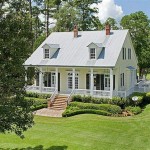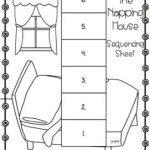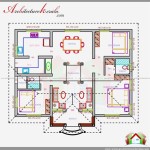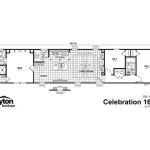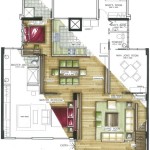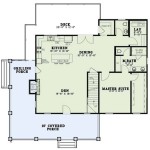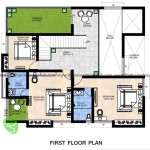Essential Aspects of Home Plans for Hillside Lots
Building a home on a hillside lot presents unique challenges and opportunities. To create a successful and functional home, careful planning and attention to detail are paramount. This article delves into essential considerations for home plans on hillside lots, ensuring a harmonious blend with the terrain and a comfortable living experience.
Site Assessment and Design
Thoroughly assess the site, including its slope, soil composition, and existing vegetation. Contour mapping and soil testing provide valuable data for designing a home that respects the terrain's natural contours and minimizes potential hazards like erosion or landslides. Consider the building envelope and orientation to optimize views, natural light, and solar exposure while minimizing the impact on the surrounding environment.
Foundation and Structural Considerations
Hillside homes require robust foundations engineered to withstand the challenges of sloping ground. Options include conventional footings, piers, or pilings, depending on the slope and soil conditions. Proper drainage is crucial to prevent water buildup and foundation problems. Structural elements, such as retaining walls and shear walls, may be necessary to stabilize the slope and ensure the home's stability.
Access and Circulation
Plan for convenient access to the home from both the street level and the upper levels. Driveways and walkways should be designed with safety and functionality in mind, considering the slope and any elevation changes. Staircases and ramps may be incorporated to connect different levels both inside and outside the home, promoting ease of movement and accessibility.
Views and Orientation
Capitalize on the potential for breathtaking views by orienting the home to maximize natural light and capture the surrounding scenery. Large windows and outdoor living spaces allow for panoramic views and create a seamless connection between the interior and exterior. However, consider the impact of sun exposure and incorporate shading elements to regulate temperature and reduce glare.
Outdoor Living and Landscaping
Integrate outdoor living areas into the home's design to fully enjoy the natural surroundings. Terraces, balconies, and patios extend the living space and provide opportunities for relaxation and entertaining. Landscaping plays a crucial role in stabilizing the slope, minimizing erosion, and creating visual interest. Native plants and sustainable landscaping practices enhance the home's connection with its surroundings.
Energy Efficiency and Sustainability
Consider energy-efficient design principles to minimize the home's environmental impact and reduce operating costs. Utilize passive solar design techniques, such as proper window placement and orientation, to optimize natural heating and cooling. Incorporate energy-efficient appliances, lighting, and HVAC systems to reduce energy consumption and promote sustainability.
Other Considerations
Additional considerations for hillside home plans include: Fire safety measures, such as proper spacing from vegetation and fire-resistant building materials; water conservation strategies, including rainwater harvesting and drought-tolerant landscaping; and accessibility features for individuals with disabilities, such as elevators or ramps. By addressing these essential aspects, homeowners can create a stunning and functional home that harmoniously complements the hillside environment.

Plan 51696 Traditional Hillside Home With 1736 Sq Ft 3 Be

Looking For The Perfect Affordable Cottage With A Large Covered Balcony Plan 1143

A Guide To Sloping Lot House Plans

Modern House Plan Sloping Lot Contemporary Style 5590 Vista

Sloped Lot House Plans With Walkout Basements At Dream Home Source Unique Modern Architecture

House Plan Ch501

Hillside And Sloped Lot House Plans

Duplex For A Down Sloping Lot 8188lb Architectural Designs House Plans

Sloped Lot House Plans Down Slope The Designers

House Plans Home Designs

